The Flemish Béguinage in Diest is one of the Flemish Béguinages in Belgium. The béguinages were founded in the 13th century in the Netherlands and Flanders. Flanders was at that time part of the Netherlands. A béguinage consists of a group of small houses built around a church or chapel, enclosed by a wall with an entrance gate. Béguinages were inhabited by béguines, religious women who dedicated their lives to God without retiring from the world. Just like nuns, béguines lived a religious live, but they did not take vows. The Béguinage in Diest was founded in 1253. Most of the 90 houses were built during the 17th and 18th centuries. The entrance gate was built in 1671 and is adorned with a niche housing the Virgin and Child. The Saint Catherine Church was built of iron sandstone in the 14th century. The Flemish béguinage of Diest is well preserved. Nowadays, the houses have become artists' ateliers and the homes for the elderly. Thirteen Flemish Béguinages were declared a UNESCO World Heritage in 1998. The Flemish Béguinage Diest is part of this UNESCO World Heritage. Another two Flemish Béguinages are: Béguinage Tongeren and Béguinage Sint Truiden.
www.werelderfgoedfotos.nl © Copyright World Heritage Photos
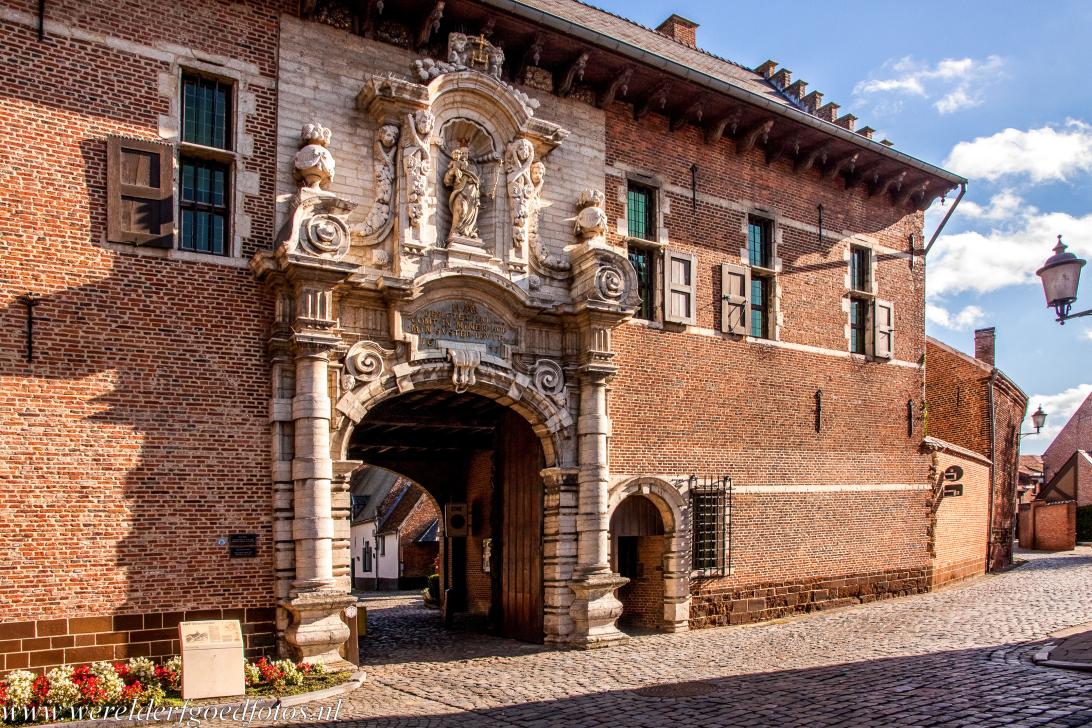
Flemish Béguinage of Diest: The Baroque main entrance was built in 1671 and is adorned with a niche housing a statue of the Madonna and Child, surrounded by sculpted flowers and heads of angels. The decorations were intended to strengthen the faith of the people. Béguinages were founded in the 13th century in the Netherlands and in Flanders, at that time, the five provinces of Flanders were a region of the Netherlands. The Béguinage of Diest is part of UNESCO World Heritage: Flemish Béguinages.

Flemish Béguinage of Diest: The Baroque main entrance was built in 1671 and is adorned with a niche housing a statue of the Madonna and Child, surrounded by sculpted flowers and heads of angels. The decorations were intended to strengthen the faith of the people. Béguinages were founded in the 13th century in the Netherlands and in Flanders, at that time, the five provinces of Flanders were a region of the Netherlands. The Béguinage of Diest is part of UNESCO World Heritage: Flemish Béguinages.
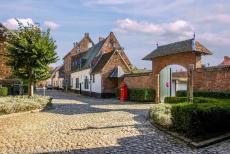
Flemish Béguinage of Diest: Béguines lived in a béguinage (Dutch: begijnhof). Béguines (Dutch: begijnen) were woman who dedicated their lives to God without retiring from the world. Just like nuns, béguines lived a religious live, but they did not take eternal religious vows of chastity and obedience, béguines could return to the world. Béguines lived and worked under the protection of a local bishop. The Beguinage is freely accessible, but most buildings are closed to the public.
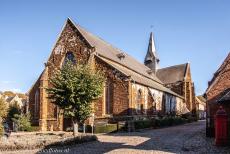
The Gothic Saint Catherine Church is situated in the centre of the Flemish Béguinage of Diest. The church was built of the regional iron sandstone in the 13th and 14th centuries on the site of an earlier chapel. A small lantern tower adorns the church. The Saint Catherine Church houses several religious works of art dating from the 17th century. The main altar is adorned with the painting 'The Adoration of the Shepherds'. The sculpted pulpit dates from 1671.
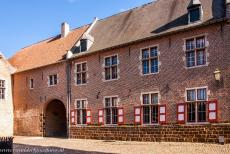
The Flemish Béguinage of Diest was founded in 1253. The Béguinage of Diest was dedicated to Saint Catherine. Most of the 90 béguinage houses were built during the 17th and 18th centuries. At the end of the 18th century, the Béguinage of Diest was dissolved during the period of French Occupation (1794-1814). After the fall of Napoleon Bonaparte in 1815, the beguines returned to the béguinage. In 1675, about 400 Beguines lived in the Beguinage of Diest. In the beginning of the 20th century, there were no longer any beguines living in a Beguinage.
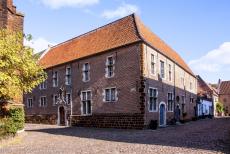
Flemish Béguinage of Diest: One of the historic red brick houses. The Béguinage of Diest is one of the largest béguinages in the world, it is located just outside the historic city centre of Diest. The streets of the béguinage are paved with cobblestones, natural stones typically irregular in size and shape. Cobblestones have been used for centuries to pave roads. Compared to many other Flemish beguinages, the streets of the Beguinage of Diest are relatively straight and wide.
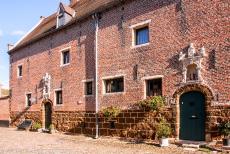
The béguine houses in the Flemish Béguinage of Diest date back to the 17th and 18th centuries, the red brick façades are ornamented with tiny niches. In the niches are small statues of saints. Béguines supported themselves with caring for the poor and the elderly, nursing and traditional textile crafts such as spinning, lace making, cloth making and weaving. Béguines also spent time in religious contemplation to experience the vision of God.
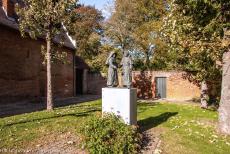
The sculpture of the béguines Johanna Uitdewilligen and Bernardina Janssen, in 1926, they were the last beguines to leave the Flemish Beguinage of Diest. Due to several wars and the crusades, there were more single women than single men in the medieval period. Living alone was a real danger for medieval women. Many of the unmarried women, often older or widowed women, joined a béguinage, it was a perfect refuge, here they lived under guidance and protection of the church and the local bishop.
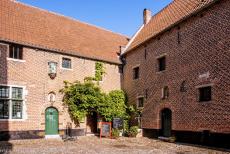
Flemish Béguinage of Diest: The Convent of the Holy Spirit houses now an authentic tavern, the building dates back to 1618. Nicolaas van Essche (1507-1578) was the pastor of the Béguinag of Diest. In 1540, he ordered to demolish the 13th century wooden houses, they were unsafe in the event of fire, the houses were rebuilt with red brick along a grid plan of broad streets. Most of the Flemish Béguinages have maintained their medieval layout and architecture.
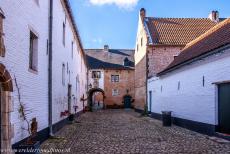
Flemish Béguinage of Diest: One of the gates is adorned with a niche housing a statue of a saint. The Béguinage of Diest is a well preserved béguinage. The béguinage is now a historic suburb of the town of Diest, the béguinage houses have become artists' studios and homes for the elderly. The former infirmary was converted into a cultural center with meeting and exhibition rooms. Just like the Flemish Béguinage of Diest, most of the Flemish Béguinages have maintained their historical atmosphere and character.
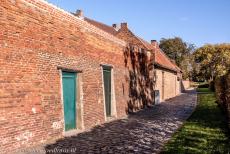
Flemish Béguinages: Just like the most beguinages, the Béguinage of Diest is surrounded by a red brick wall, there are two entry gates. The Béguinage of Diest is one of the largest remaining béguinages in the Low Countries. The Flemish Béguinage of Diest is one of the thirtheen Flemish Béguinages recognized by UNESCO as a World Heritage. The well preserved Béguinage of Dies is situated on the edge of the historic city centre of Diest. Diest is situated in the northeastern part of Belgium, about 60 km of Brussels.
